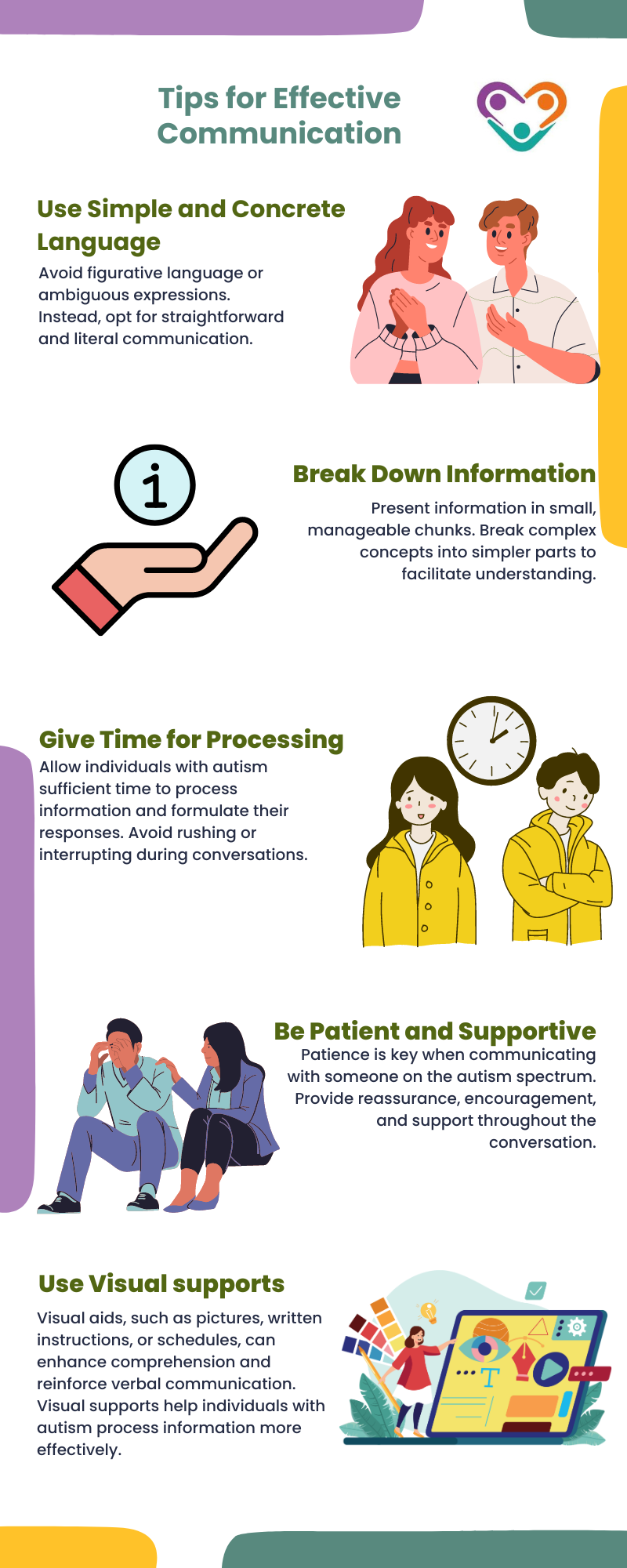Loving an autistic person means embracing who they are with understanding, patience, and acceptance. Every person, whether autistic or not, deserves to be loved for their true self. Building a relationship with someone on the spectrum may come with unique challenges, but it also opens the door to a deeper, more meaningful connection.
When you approach love with kindness and a willingness to learn, you create a space where your loved one feels safe, respected, and appreciated. This is the foundation for any strong and healthy relationship, especially when loving an autistic person.
Loving an Autistic Person
Autistic individuals may show love in ways that are different from neurotypical individuals. They often have a deep sense of empathy and can sense emotional needs in others. Some unique expressions of love from autistic individuals include sharing special interests and valuing overlooked aspects of life.
It’s essential to embrace and reciprocate these expressions to foster a strong and meaningful relationship.
That said, relationships with autistic individuals also come with their own set of challenges. One challenge is that individuals with autism may acquire knowledge about sex and romantic relationships from different sources than their neurotypical peers, which can lead to difficulties in expressing and interpreting intentions in relationships. It’s important to provide clear and open communication, allowing both parties to express their feelings and intentions honestly.
Understanding and respecting the physical touch preferences of autistic individuals is also crucial in expressing love in relationships. Autistic individuals may have sensory sensitivities and may feel uncomfortable or overwhelmed by certain types of physical touch. It’s important to learn and respect their boundaries, finding ways to communicate the love that works for both individuals.
Additionally, autistic individuals may face challenges in social situations and relationships due to difficulties in communication and social skills. This can lead to potential misunderstandings when expressing affection.
Teaching autistic individuals about friendship, boundaries, and social cues can be beneficial in helping them navigate relationships effectively and identify genuine friendships.
Dating on the Spectrum
In the context of dating, individuals on the autism spectrum have their own unique preferences and challenges. Understanding and respecting these differences is essential for fostering meaningful relationships.
In this section, we will explore two important aspects of dating on the spectrum.

Online Communication Preferences
Autistic individuals often have a preference for online communication when it comes to dating. This mode of communication offers them several advantages.
Firstly, it allows them to view an introduction to the other person before engaging in direct communication. This provides a sense of comfort and familiarity, helping to ease potential social anxiety.
Secondly, online communication allows autistic individuals to process words without the pressure of immediate response. This gives them the time they need to think about the message and formulate their preferred response. It can be especially helpful for individuals who may struggle with verbal communication or have difficulties with social cues.
When engaging in online communication with an autistic individual, it’s important to be patient and understanding. Give them the space and time they need to respond, and avoid pressuring them for immediate answers. Building a connection through online communication can lay a solid foundation for a successful relationship.
Managing Physical Touch
Autistic individuals can be more sensitive to physical touch compared to non-autistic individuals. Managing physical touch in a relationship requires open communication, understanding, and respect for individual boundaries and preferences.
It is crucial to have ongoing discussions with your partner about comfort levels and readiness for physical contact. Clear communication is key to ensuring that both partners feel safe and respected. Autistic individuals may have specific sensory sensitivities that can make certain types of touch uncomfortable or overwhelming. Respect their boundaries and be mindful of their comfort levels.
For some autistic individuals, physical touch may take time and trust to become comfortable with. It is important to allow them to set the pace and not rush into physical intimacy. Patience, understanding, and a shared understanding of boundaries are essential in navigating physical touch in a relationship with an autistic individual.
Handling Intense Emotions
In order to love an autistic person, you have to understand and navigate intense emotions in order to build a healthy and fulfilling relationship. Autistic individuals often experience emotions intensely, which can create challenges in processing, regulating, and expressing feelings.
Autistic individuals may experience emotions with heightened intensity. This means that feelings of joy, sadness, anger, or anxiety can be more pronounced compared to neurotypical individuals. It’s important for partners and caregivers to be patient, empathetic, and understanding when supporting an autistic person through their emotional journey.
One effective approach to managing emotional intensity is to establish open and honest communication. Encourage your loved one to express their emotions and provide a safe space for them to share their feelings without judgment. Active listening and validating their emotions can go a long way in building trust and emotional connection.
Additionally, it’s important to respect each other’s boundaries and needs during times of emotional intensity. Autistic individuals may require more time and space to process their emotions. Encourage self-care strategies such as engaging in calming activities or seeking support from a therapist or counselor.
Autistic individuals often show love by sensing emotional needs in others and expressing affection in unique ways. A powerful way to connect with an autistic partner is by embracing and valuing their special interests. These interests can be a source of joy, comfort, and fulfillment for them.
In order to foster a strong connection, it’s important for both partners to take turns talking about and engaging in each other’s special interests. This allows for mutual understanding, appreciation, and the opportunity to learn from one another.
It’s important to remember that love is expressed in different ways by different individuals. For autistic individuals, sharing and connecting through special interests can be a profound expression of love and affection. Embrace these unique aspects and celebrate the ways in which your autistic partner shows their love and affection.
Communication Strategies
Effective communication is key to building and maintaining relationships with individuals on the autism spectrum. Autism can present challenges in non-verbal, social, and verbal communication. Employing specific communication strategies can greatly enhance understanding and connection within the relationship.
There are two important strategies to consider here which are:
Clear Communication
Clear and concise communication is crucial when interacting with individuals on the autism spectrum. Here are some tips for effective communication:

Visual Aids and Instructions
In addition to clear verbal communication, visual aids and instructions can be valuable tools for individuals with autism. Here’s how they can be implemented:
- Visual Schedules: Visual schedules provide a visual representation of daily activities or routines. They help individuals with autism understand and anticipate what will happen next, reducing anxiety and promoting independence.
- Social Stories: Social stories are visual narratives that describe social situations, events, or expectations. They help individuals with autism understand social cues, appropriate behaviors, and expectations in specific situations.
- Visual Cues: Using visual cues, such as gestures or sign language, can aid understanding and communication. These cues provide additional visual information to support verbal communication.
- Written Instructions: Providing written instructions alongside verbal instructions can reinforce understanding for individuals with autism. Written instructions offer a reference point and can be reviewed at their own pace.
- Visual Aids for Emotions: Visual aids, such as emotion cards or charts, can help individuals with autism recognize and express their own emotions as well as understand the emotions of others.
In the end, loving an autistic person means embracing their unique qualities and understanding their world. It’s about offering patience, celebrating their strengths, and being a supportive presence in their journey. By approaching your relationship with empathy and openness, you create a space where they can truly thrive.
Remember, love is about connection and acceptance, and with these, you can nurture a bond that grows stronger every day. For those seeking support and guidance in their journey, explore ABA services in New Jersey, Georgia, Indiana, and New York. Contact us at Golden Care Therapy to learn more about how we can assist you and your loved ones. Your path to enhanced understanding and support begins here.



